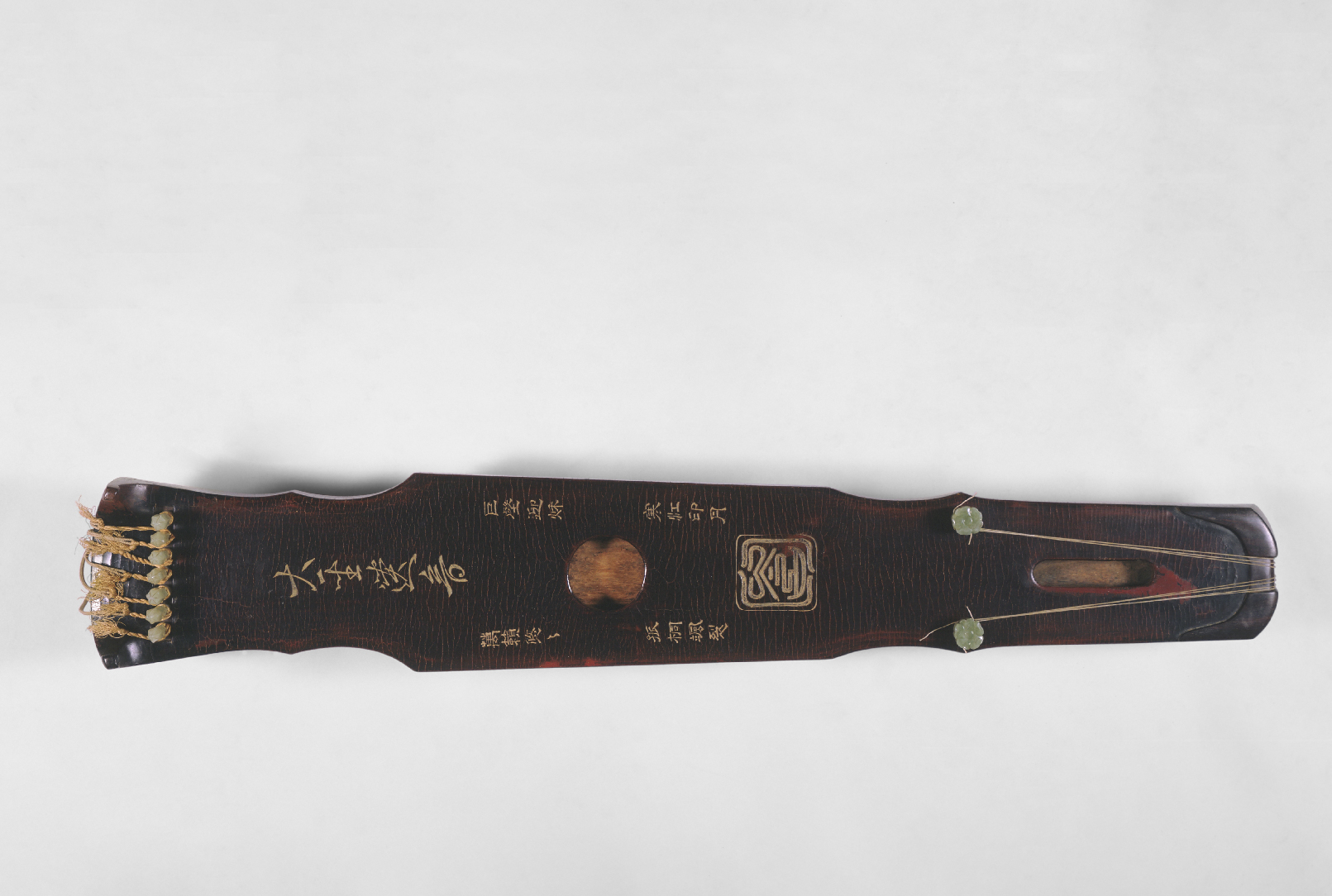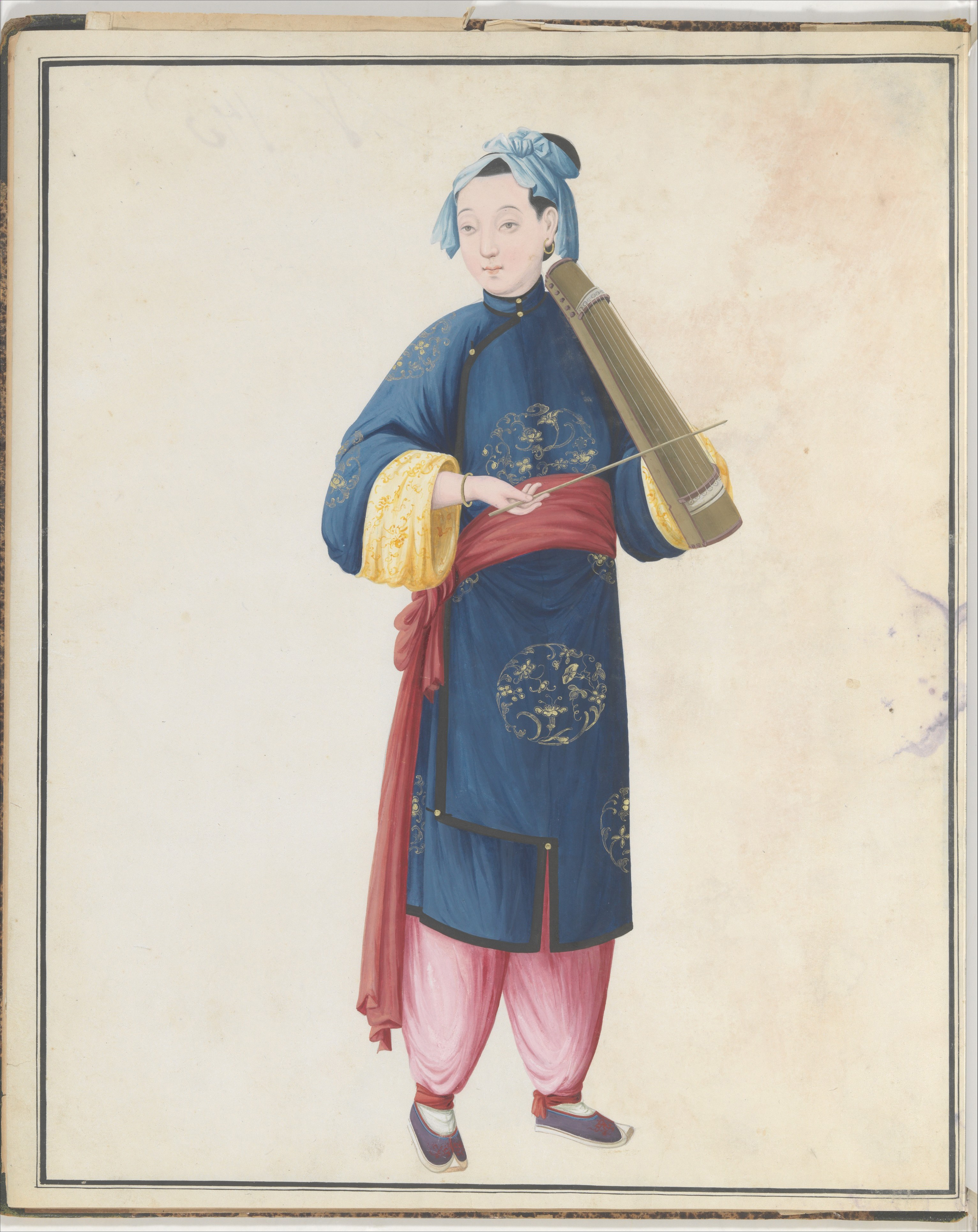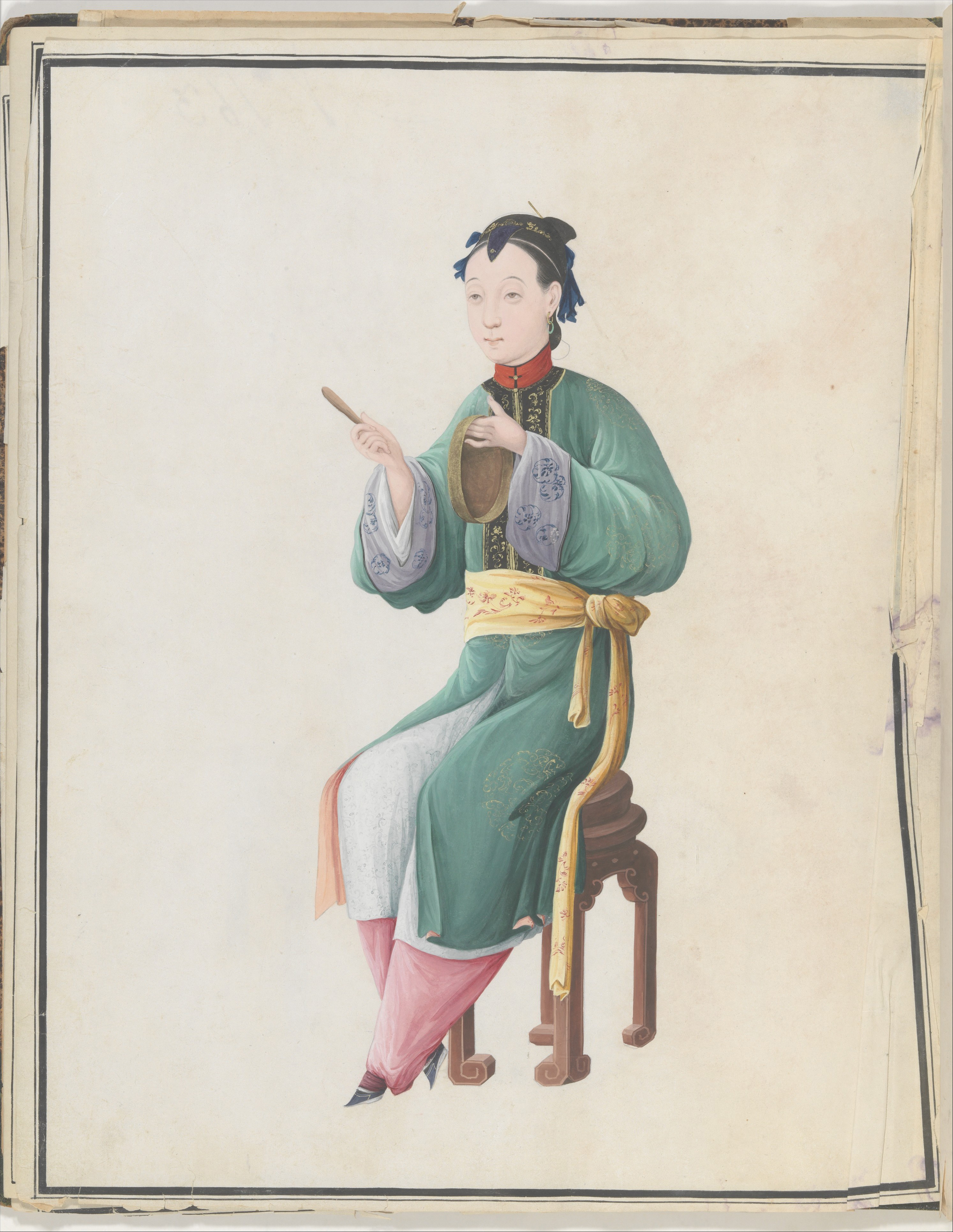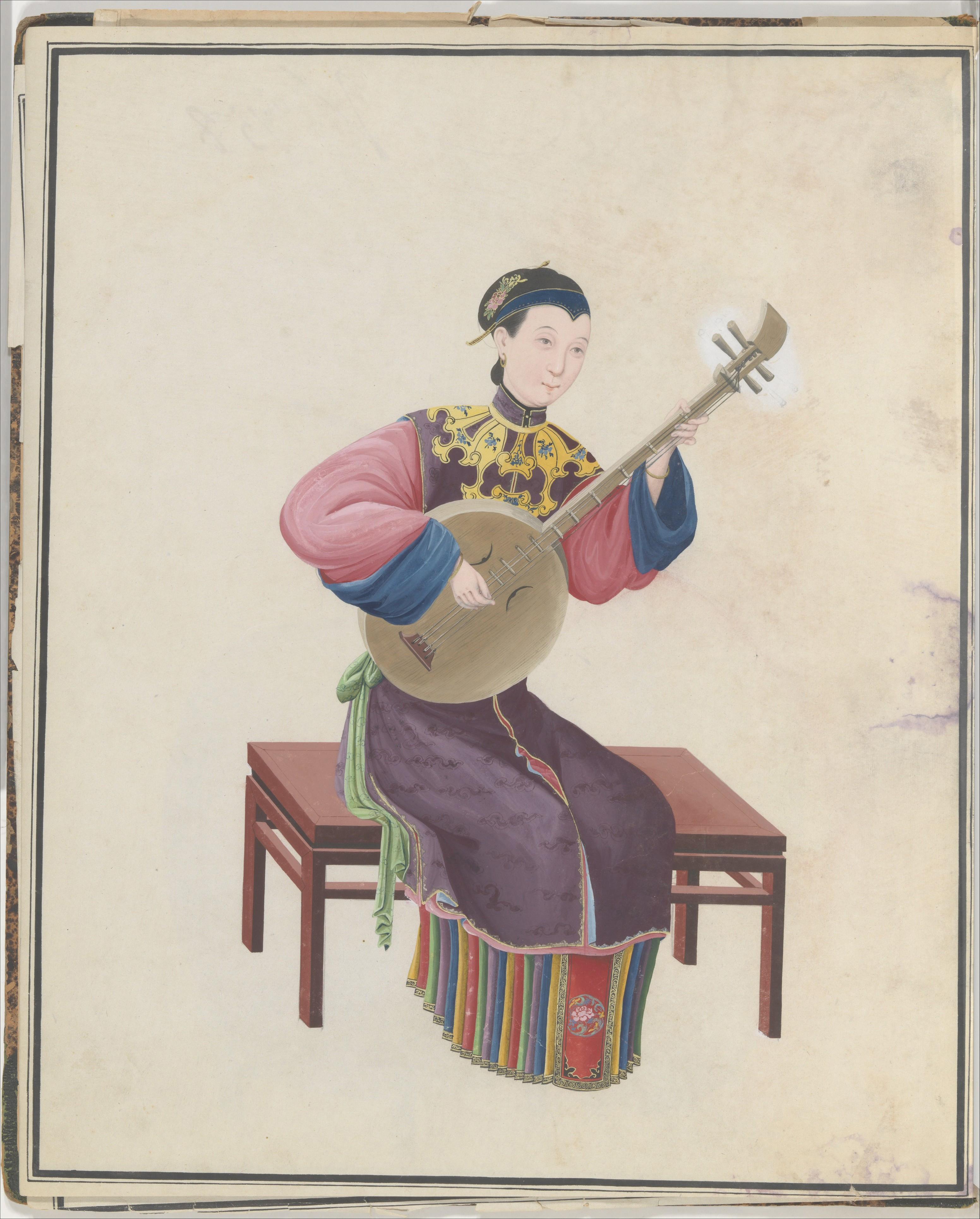Resonating and Rhythmic
Music has the capacity to gratify both the mind and body. It therefore constituted an indispensable part of life in the palace. In times past, music was not just a form of entertainment, but was also integral to the system of etiquette and rituals of society. In Confucian philosophy, rites and music are considered to have a didactic effect on the common people. During the Ming and Qing eras, there was a complete system governing rites and music in the Forbidden City, broadly divided into two categories according to their nature: ceremonial, and recreational. In terms of musical function, this system recognises four major groups: music for worship and sacrifice, music during the assembly of courtiers and emperors, music at imperial banquets, and music accompanying imperial processions. Moreover, by developing distinctive folk elements within this art form, such as shaman sacrificial music and group dances, music at the Qing court may be described as broad and inclusive.
The emperors of the Qing dynasty enjoyed watching theatre performances. There are not only imperial theatre troupe, but also three-floor theatre with stage effect. For more interesting details, please visit https://traversingforbiddencity.com/en/professions/actors.

Performances at the Imperial Banquet in Mountain Resort, Qianlong period, Qing Dynasty
Performances at the Imperial Banquet in Mountain Resort, Qianlong period, Qing Dynasty
Provided by the Palace Museum

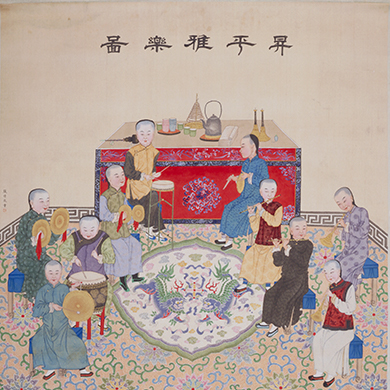
Music in Peaceful Times by Zhang Kai, Qing Dynasty
Music in Peaceful Times by Zhang Kai, Qing Dynasty
Provided by the Palace Museum

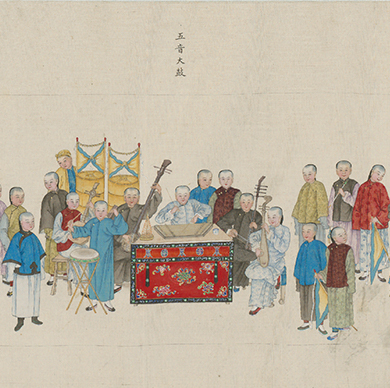
Scroll Celebrating Peace by Zhang Kai et al, Qing Dynasty
Scroll Celebrating Peace by Zhang Kai et al, Qing Dynasty
Provided by the Palace Museum
This is a scroll produced by a team of painters consisting of Zhang Kai and others at the Ruyi Guan, the imperial painting and crafts workshop. It depicts the propitious themes of good fortune, fulfilled wishes and joyous peace. The shapes and characteristics of the musical instruments at the time are accurately portrayed in the theatre performance shown here.

Harmony between Heaven and Earth
Zhonghe shaoyue (literally, balanced harmonious ancient music) was ritual music of the highest order in the Forbidden City during the Ming and Qing dynasties. Encompassing rites, music, singing and dancing, it was performed by designated ensembles during important occasions like imperial assembly of courtiers and emperors, sacrificial ceremonies and court banquets. Shaoyue has been mentioned in historical records dating back to the pre-Qin Dynasty period, and zhonghe was originally a term of praise for such ancient music. Materials used to make shaoyue instruments include metal, stone, clay, leather, silk, wood, gourd and bamboo, comprising the full complement of the bayin (eight sounds) system. This is aligned with the Confucian concept where music and rites are deemed essential for harmony between heaven and earth. Some of these musical instruments have interesting shapes and are very different from what one would imagine them to be nowadays.

Bianqing, a set of green jade chimes decorated with gilt dragon and cloud patterns, Qianlong Period, Qing Dynasty
Bianqing, a set of green jade chimes decorated with gilt dragon and cloud patterns, Qianlong Period, Qing Dynasty
Provided by the Palace Museum
Across successive dynasties, the bianqing had been an important instrument among the bayin (eight sounds) system in ritual court music.


Bianzhong, a set of golden chimes decorated with dragon and
cloud patterns, Qianlong Period, Qing Dynasty
Bianzhong, a set of golden chimes decorated with dragon and
cloud patterns, Qianlong Period, Qing Dynasty
Provided by the Palace Museum
Bianzhong was an important percussion instrument in China's ritual and court music. Bells were arranged according to their sizes.
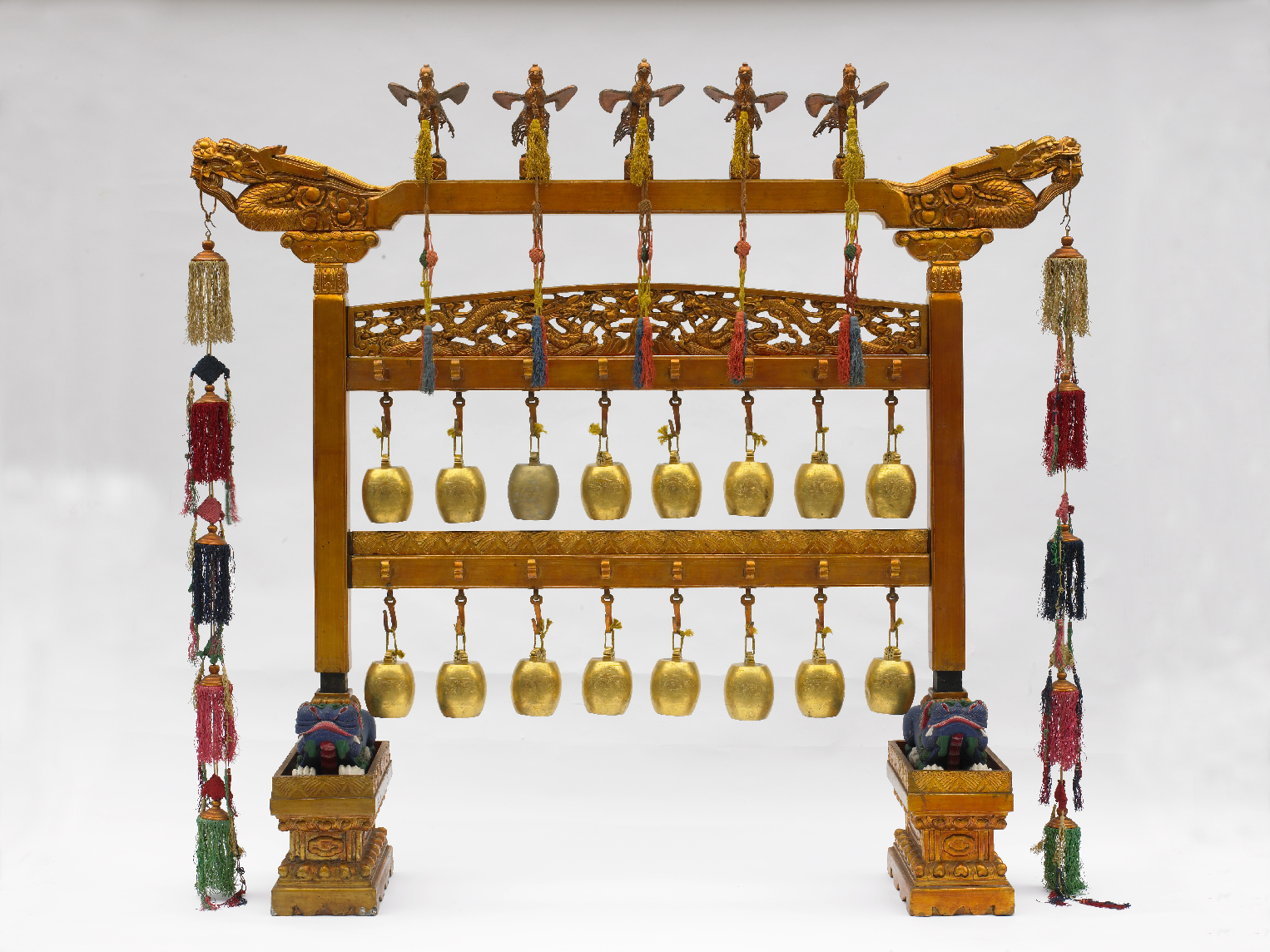

Zhu, a painted wooden percussion instrument in the zhonghe shaoyue ensemble, Qing Dynasty
Zhu, a painted wooden percussion instrument in the zhonghe shaoyue ensemble, Qing Dynasty
Provided by the Palace Museum
The zhu was used exclusively in the zhonghe shaoyue ensemble of the Ming and Qing courts, belongs in the wood category of the bayin (eight sounds) system. Striking the zhu thrice with a mallet signals the start of the music.


Xun, red lacquer aerophone decorated with gilt dragon and cloud patterns in zhonghe shaoyue ensemble, Qing Dynasty
Xun, red lacquer aerophone decorated with gilt dragon and cloud patterns in zhonghe shaoyue ensemble, Qing Dynasty
Provided by the Palace Museum
The xun has a long history in China. A 7,000-year-old specimen, with just one finger hole, was unearthed from the Hemudu archaeological site. The number of finger holes increased over time in later versions, thus enriching the instrument’s melodic expressivity. The xun is also the only instrument in the clay category of the bayin (eight sounds) system of the Ming and Qing periods.


Paixiao, red lacquer panpipes made of bamboo tubes and decorated with gilt dragon and cloud patterns, Qing Dynasty
Paixiao, red lacquer panpipes made of bamboo tubes and decorated with gilt dragon and cloud patterns, Qing Dynasty
Provided by the Palace Museum
Panpipes have existed since the Neolithic Age. The paixiao shown here has sixteen bamboo tubes of the same diameter. The pitch of each tube is determined by its length: the longer the tube, the lower the pitch. Paixiao belongs in the bamboo category of the bayin (eight sounds) system.


Yu, painted wooden percussion instrument in zhonghe shaoyue ensemble, Qing Dynasty
Yu, painted wooden percussion instrument in zhonghe shaoyue ensemble, Qing Dynasty
Provided by the Palace Museum
This yu is shaped like a crouching tiger with a groove on its back. 27 pieces of wood, arranged in groups of three, project from the groove. These projections, or teeth, emit sound when struck. Yu belongs in the wood category of the bayin (eight sounds) system, and sounding it indicates the music is about to end.

Music that Resonates
The guqin, or qin is the most traditional Chinese instrument with the longest history. The literati of ancient China expressed their aspirations and conveyed their feelings with the sounds of the qin. Playing the instrument was not just about performing music. It was also an important way to engage in dialogue with oneself, communicate one’s feelings with others, and cultivate one’s moral character.
The quintessential Chinese music and the story of NASA’s space exploration
In 1977, the National Aeronautics and Space Administration (NASA) of the United States of America launched the Voyager 1 unmanned space probe into the outer solar system. It was the first man-made spacecraft to ever leave the solar system. Voyager 1 carried a phonograph record which contained 27 world-famous compositions that best represented the diversity of Earth’s civilisations, the longest excerpt being Flowing Streams, a qin piece performed by Guan Pinghu (also spelt ‘Kuan P’ing-hu’ in the NASA records) (1897-1967). One could say that it assumed the status of being the quintessential piece of Chinese music.

Qin named Da Sheng Yi Yin (Musical Legacy of the Sage), Tang dynasty
Qin named Da Sheng Yi Yin (Musical Legacy of the Sage), Tang dynasty
Provided by the Palace Museum
Shaped in the Shennong style, the qin features a soundboard made from paulownia. It was made during the middle of the Tang dynasty and had long been in the imperial collection of curios of Qing.
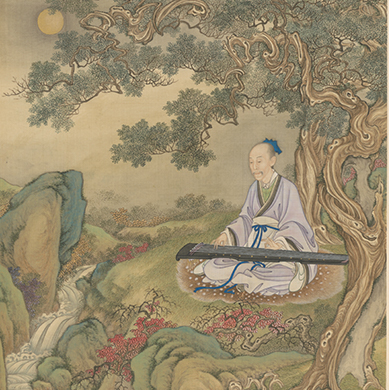
Playing the Qin amongst Pine and Streams, leaf from the album showing series of paintings on Emperor Yongzheng at leisure, Qing Dynasty
Playing the Qin amongst Pine and Streams, leaf from the album showing series of paintings on Emperor Yongzheng at leisure, Qing Dynasty
Provided by the Palace Museum

Sizhu (silk and bamboo) Ensembles
Numerous other distinctive chordophonic and aerophonic musical instruments have been recorded in Chinese history. For instance, the Tang poet Bai Juyi (772-846) praised the pipa in a poem, likening its timbre to the sounds of large and small pearls dropping onto a jade platter; while the Song scholar Chen Yuyi (1090 – 1138) reminisced about bygone days when he enjoyed playing the di through the night among apricot blossoms. Such instruments, be they bamboo flutes which Chinese literati associate with affection and nostalgia, or drums and gongs which are energetic and rhythmic, all highlight the rich and extensive development of classical Chinese music. A prized collection of these instruments is housed at the Forbidden City. Coupled with an anthology of related paintings and calligraphic works, it is evident that the pleasure of listening constituted an ultimate pursuit at the palace.
Doraemon theme song
Retrieved from: Zi De Guqin Studio on YouTube

Musicians playing assorted instruments, Qing Dynasty
Musicians playing assorted instruments, Qing Dynasty
Provided by The Metropolitan Museum of Art, New York

Pipa, Ming Dynasty
Pipa, Ming Dynasty
Provided by The Metropolitan Museum of Art, New York
The pipa was introduced into China from Central Asia. Before the 10th century, the pipa was held horizontally like the guitars of today. With time, it gradually changed into an upright instrument. The name pipa actually describes the way the instrument is played, with pi meaning ‘play forwards’ (or left) and pa meaning ‘play backwards’ (or right).
The back and the sides of the exhibit shown here are decorated with more than 100 hexagonal ivory pieces as inlays, variously engraved with flowers, birds, cats, bats, children, deities, etc.
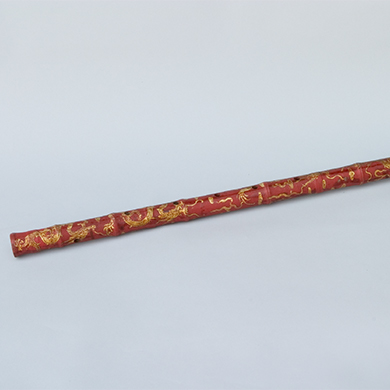
Xiao, red lacquer bamboo end-blown flute decorated with gilt dragon and cloud patterns, Qing Dynasty
Xiao, red lacquer bamboo end-blown flute decorated with gilt dragon and cloud patterns, Qing Dynasty
Provided by the Palace Museum

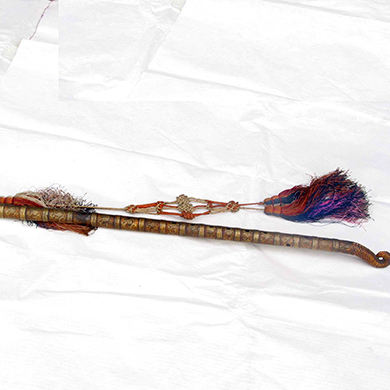
Longtoudi, dragon-headed transverse flute, Qing Dynasty
Longtoudi, dragon-headed transverse flute, Qing Dynasty
Provided by the Shenyang Palace Museum


Baihailuo, white conch shell encased in copper caps and runners inlaid with stones, Qianlong period, Qing Dynasty
Baihailuo, white conch shell encased in copper caps and runners inlaid with stones, Qianlong period, Qing Dynasty
Provided by the Shenyang Palace Museum


Sheng, free reed wind instrument, Qing Dynasty
Sheng, free reed wind instrument, Qing Dynasty
Provided by the Palace Museum


Yunluo gong set, Qing Dynasty
Yunluo gong set, Qing Dynasty
Provided by the Palace Museum
The yunluo, or ‘cloud gong’, originated in the Tang Dynasty and gained popularity during the Yuan period. It became widely used in Chinese operas and religious rituals. It is also used in the royal processions of emperors. The gong set is played with two types of mallets: the soft type produces tones that are mellow and graceful, while the hard type produces strident and bright tones.

New Exotic Sounds
Western music, including the music box, was introduced into the Forbidden City during the Qing Dynasty. The music box is a mechanical device which produces melodies, and Swiss-made boxes were seen in the Qing court between the 18th and 19th centuries. These devices were housed in casings made of gilt brass, glass and wood. Exquisitely crafted, they were easy to play, and their sounds limpid and crystalline, so they were often expensive. The intricate designs were frequently incorporated into timepieces that became favourites of the imperial family and the upper class at the time. In addition, the Forbidden City collection also includes a gramophone and vinyl records with tracks of Peking Opera, Clapper Opera as well as foreign songs.
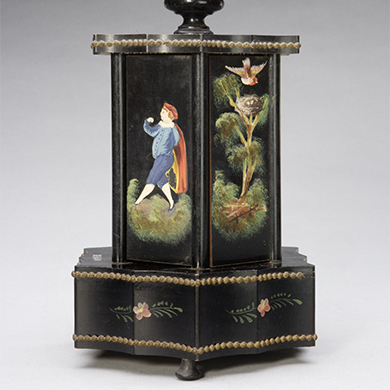
Pavilion-shaped wooden music box, Qing Dynasty
Pavilion-shaped wooden music box, Qing Dynasty
Provided by the Palace Museum
The mechanism, or movement, in a music box that produces the melody consists of two parts: a rotating cylinder and a comb of tines. Tiny pins project from the surface of the cylinder at specific positions. As the cylinder rotates, its protruding pins flick the ends of the tines of the nearby comb. Each pin strike produces its own sound, and the cylinder’s pre-determined turning speed creates a specific melody in each rotation.


Miniature music box with rotating figurines, Qing Dynasty
Miniature music box with rotating figurines, Qing Dynasty
Provided by the Palace Museum
When the music starts, the costumed figurines rotate face-to-face in unison, as if they were dancing to the music.


Music box, Qing Dynasty
Music box, Qing Dynasty
Provided by the Palace Museum
This music box comes with 10 cylinders, each of which plays 4 different melodies. The cylinders may be interchanged to play the tunes of choice.


Vinyl record, Qing Dynasty
Vinyl record, Qing Dynasty
Provided by the Palace Museum
Tan Xinpei (1847-1917) was a Peking Opera virtuoso of great renown. In this recording released under the Pathé label, he sings Silang Visits His Mother, an aria from the saga of the patriotic Yang family of the Song Dynasty. Pathé was a recording company founded in Paris in 1890s.

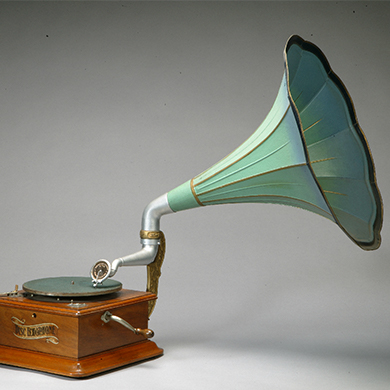
Gramophone, Qing Dynasty
Gramophone, Qing Dynasty
Provided by the Palace Museum
In Qinggong huiqin jianwen (literally, accounts of kinsfolk meeting in the Qing palace), Puyi’s younger brother Pujie mentioned the use of a gramophone at the imperial palace. Around 1916, Pujie’s grandmother brought him to the palace on several occasions. After lunch, when the adults were chatting among themselves, Pujie and his sister would listen to records the eunuchs played for them on the gramophone behind the screen in the Hall.








